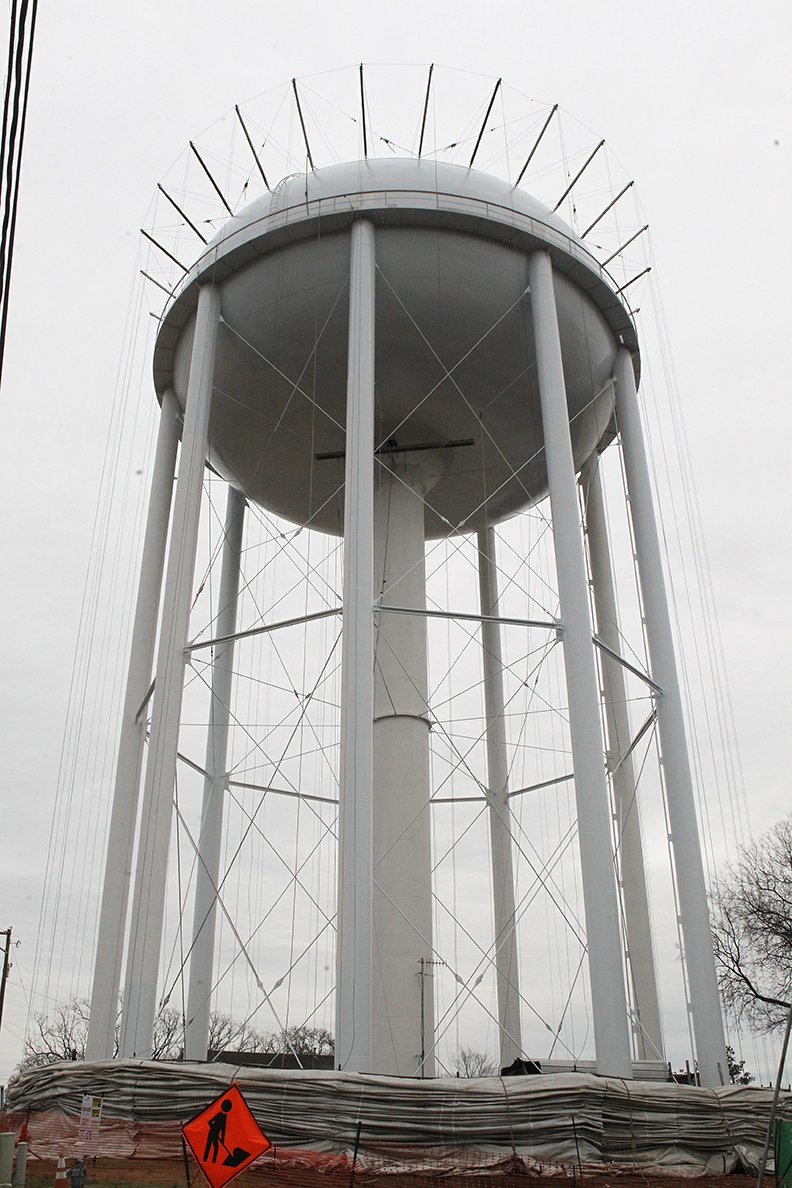HOT SPRINGS -- More than $4 million was committed through the end of last year from the $20 million bond issue the city floated for capital improvements to the regional water system serving more than 35,000 meters inside and outside the corporate limits, according to a report from the city finance department.
The $4,114,324 does not include the $1,189,640 contract the Hot Springs Board of Directors will consider at its business meeting tonight. It will pay for new switchgear and a motor-control center at the plant treating water collected by the intake at upper Lake Hamilton. The roughly $500,000 outlay the board authorized in October for the purchase of 33 acres on Little Mazarn Road for the construction of a new treatment plant has also yet to be added to the total.
The city has earmarked $5 million in bond proceeds for preliminary engineering, design and right-of-way acquisition for the roughly $100 million project to bring its 23 million-gallon average daily allocation from Lake Ouachita online. The balance of the funds is dedicated to other improvements, not including work being done to the elevated storage tank on Hollywood Avenue.
The $746,950 contract the board awarded Classic Protective Coatings Inc. of Wisconsin in August was paid from the remaining balance of a 2015 debt issue. The cost includes painting the city logo on the exterior of the 1 million-gallon tank.
Matt Dunn of Crist Engineers Inc., the city's water system consultant, told the board last week the logo will be painted on the east and west sides of the tank, with the west side being discernible from as far away as Oaklawn Racing and Gaming.
The interior is being recoated and outfitted with a mixing system designed to improve water quality on the south and east ends of the system's 145-square-mile service area. Trihalomethane concentrations exceeding the Environmental Protection Agency's 80-parts-per-billion limit have been detected in those areas, as their distance from treatment plants at the northwest and north ends of the system promotes the formation of the chemical compound.
A byproduct of the interaction between chlorine used in the treatment process and organic material in the water, THMs become more pronounced as treated water remains in the distribution system. The state Health Department has said EPA research linked an increased risk of liver and kidney cancer to long-term exposure to high THM concentrations.
The Hollywood tank is the primary feeder for customers on the south and east ends of the system. Adding a mixing capability will direct older water at the top of the tank to the bottom, where it can be distributed before the newer water. System operators currently have no way to circulate the contents of the tank, leaving older water in storage longer and increasing water age for customers on the system's outer edges.
The $20 million bond issue includes funds for the 190-foot-tall storage tower being built behind Cornerstone Market Place. The city committed $858,813 from the bond issue toward the $4,647,000 contract the board awarded Chicago Bridge & Iron LLC of Georgia in June. The balance was paid from the 2015 bond issue.
It will be the first elevated tank added to the distribution system since the Hollywood tank came online in 1964, the city has said, holding 3 million gallons that can tie into the 20-inch transmission line that runs along the King Expressway.
Construction is 30 percent complete and is expected to conclude next winter.
"We're waiting for the pedestal crew to come in next," Dunn said last week, explaining that foundation work that's been completed required the pouring of 1,000 feet of concrete supported by more than 600,000 pounds of steel rebar. "Three million gallons weighs a lot. You have to have a big load underground to hold that water in the air."
NORTHWOODS DAMS
Core samples for geotechnical analysis of dams impounding lakes Sanderson and Dillon at the Northwoods Urban Forest Park have been completed.
The analysis is part of the $1,209,350 contract the board awarded Crist in July for engineering work on improvements expected to cost almost $10 million.
The park's three small lakes, including Bethel, were decommissioned as a municipal water source decades ago. Hewed from a nearby mountain, the masonry that forms Dillon Dam is more than a century old. Vegetation that has encroached over that time has loosened the mortar that binds the bricks together, as evidenced by the tree that has sprouted from the middle of the structure. Encroaching vegetation has also affected the structural integrity of Bethel Dam, engineers have said.
The $1,189,640 contract the board will consider Tuesday night for a switchgear and motor-control center at the water plant on upper Lake Hamilton will also be paid from the $20 million bond issue. It's part of the almost $4 million project to replace the system that controls high-service pumps that push treated water through two distribution lines leading from the plant.
The equipment will be located on the 4.5 acres adjacent to the plant's Cozy Acres Road location the city acquired for $113,450 last year.
The board awarded Crist a $298,250 contract to design the control system and oversee its installation.
Metro on 01/15/2019
